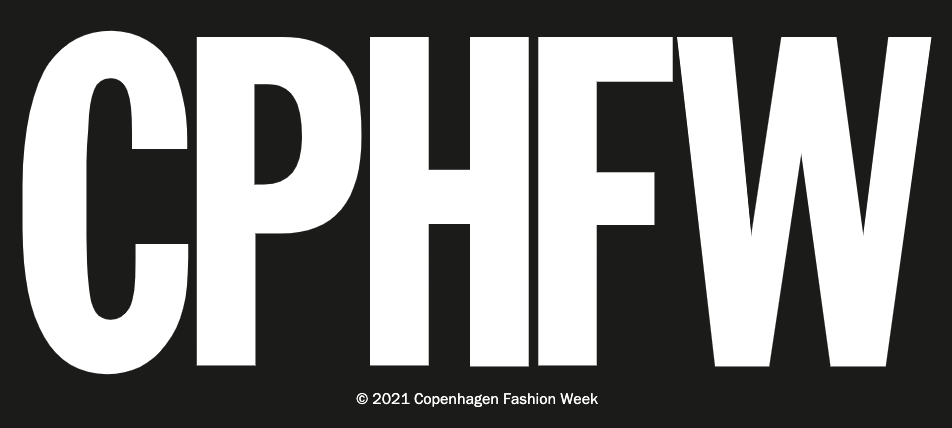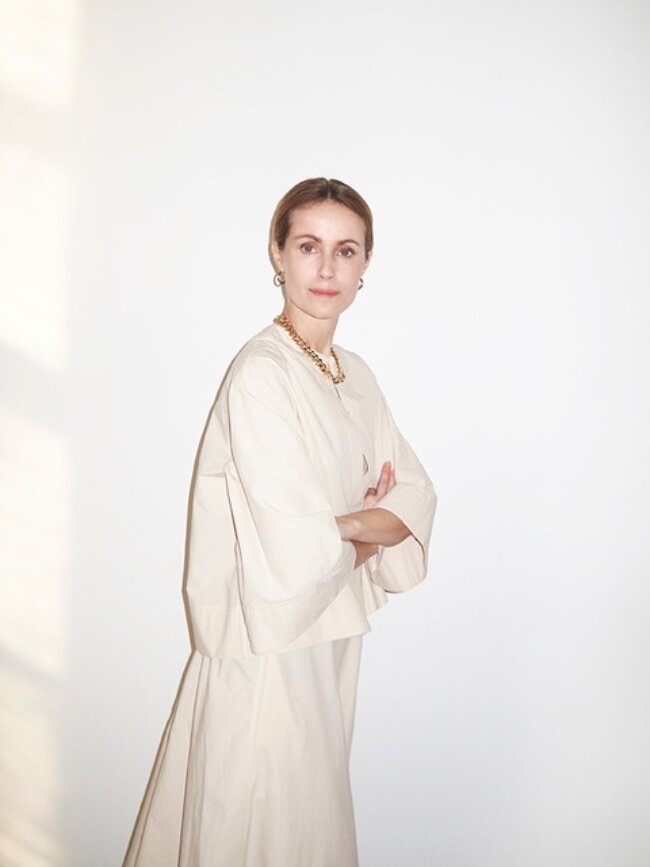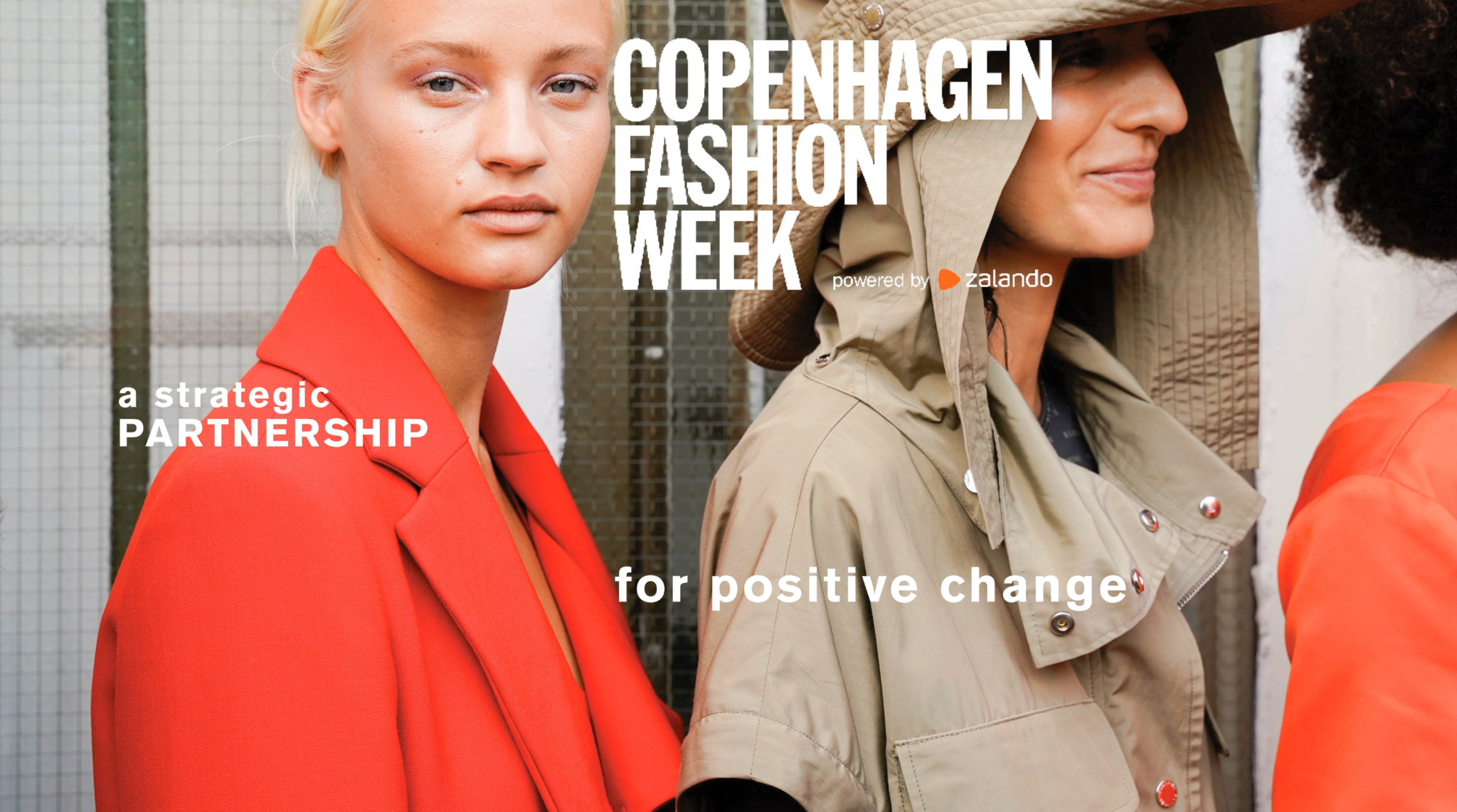Sustainability and Copenhagen Fashion Week
by HULA on Sep 10, 2021

As the world slowly creeps back to normalcy, we are seeing more physical presentation of fashion in addition to digital catwalks and fashion films. Discounting Haute Couture Week in Paris last month, for the first time in a long time, Copenhagen Fashion Week SS22 has blessed us with a full on IRL catwalks and shows. On the surface, the 'bring-back' of real life shows may signal the return of the good ol' physical fashion presentation that has dominated the global fashion community for decades; on a closer look, it marks the beginning of a new era as a part of a plan to bring a more sustainable outlook to future fashion events through a series of commitments, which designers, brands, suppliers and show runners have to adhere to.
[caption id="" align="aligncenter" width="650"] Cecilie Thorsmark, CEO of Copenhagen Fashion Week[/caption]
“All industry players – including fashion weeks – have to be accountable for their actions and be willing to change the way business is done. The timeframe for averting the devastating effects of climate change on the planet and people is less than a decade, and we’re already witnessing its catastrophic impacts today. There can be no status quo,” explained in a statement Cecilie Thorsmark, CEO of Copenhagen Fashion Week.
“Copenhagen Fashion Week is the cultural and commercial meeting place of the Scandinavian fashion industry. This gives us an enormous responsibility and the potential to create impactful change in the industry at large. By taking this direction, we go from being a traditional event to being a platform for industry change,” she added.
From a show goer's perspective, only electric cars are used to usher invitees around and not a single disposable drinking vessel is in sight. On a deeper level, brands which wish to participate in the CPHFW must meet stringent measures which were designed to help tackle three of the 17 Sustainable Development Goals laid down by the UN. The three include SDG 12: Responsible consumption and production, SDG 13: Climate Action and SDG 17: Partnerships for the goals.
Before brands get showtime during the Fashion Week in Copenhagen, applicants must conform to the minimum standards of the 2023 Sustainability Requirements, those who fail to comply even the minimum bare a "high risk of not being eligible to show" as stated in Copenhagen Fashion Week's Sustainability Action Plan. Striving for more than just superficial greenwashing practices, the outline of the requirement even require brands to achieve some never-imposed-before requirements, which make perfect sense, such as diversity and equality in their management approach; a transparent supply chain, which extents to tier-one and tier-two suppliers; products are expected to be designed for circularity, allowing refurbishment, versatility and biodegradability; some materials and elements are on the restricted substances list which are expected to be followed by brands as well as their suppliers; set design is to be zero-waste; single-use hangers are banned, as well as single-use plastic protecters and materials; diversity and inclusivity must be considered during the casting of model.
To see how seriously Copenhagen Fashion Week takes sustainable, read the below for their full list of requirements:
[caption id="" align="alignnone" width="2048"]
Cecilie Thorsmark, CEO of Copenhagen Fashion Week[/caption]
“All industry players – including fashion weeks – have to be accountable for their actions and be willing to change the way business is done. The timeframe for averting the devastating effects of climate change on the planet and people is less than a decade, and we’re already witnessing its catastrophic impacts today. There can be no status quo,” explained in a statement Cecilie Thorsmark, CEO of Copenhagen Fashion Week.
“Copenhagen Fashion Week is the cultural and commercial meeting place of the Scandinavian fashion industry. This gives us an enormous responsibility and the potential to create impactful change in the industry at large. By taking this direction, we go from being a traditional event to being a platform for industry change,” she added.
From a show goer's perspective, only electric cars are used to usher invitees around and not a single disposable drinking vessel is in sight. On a deeper level, brands which wish to participate in the CPHFW must meet stringent measures which were designed to help tackle three of the 17 Sustainable Development Goals laid down by the UN. The three include SDG 12: Responsible consumption and production, SDG 13: Climate Action and SDG 17: Partnerships for the goals.
Before brands get showtime during the Fashion Week in Copenhagen, applicants must conform to the minimum standards of the 2023 Sustainability Requirements, those who fail to comply even the minimum bare a "high risk of not being eligible to show" as stated in Copenhagen Fashion Week's Sustainability Action Plan. Striving for more than just superficial greenwashing practices, the outline of the requirement even require brands to achieve some never-imposed-before requirements, which make perfect sense, such as diversity and equality in their management approach; a transparent supply chain, which extents to tier-one and tier-two suppliers; products are expected to be designed for circularity, allowing refurbishment, versatility and biodegradability; some materials and elements are on the restricted substances list which are expected to be followed by brands as well as their suppliers; set design is to be zero-waste; single-use hangers are banned, as well as single-use plastic protecters and materials; diversity and inclusivity must be considered during the casting of model.
To see how seriously Copenhagen Fashion Week takes sustainable, read the below for their full list of requirements:
[caption id="" align="alignnone" width="2048"] Copenhagen Fashion Week inks sustainable accord with Zalando[/caption]
Copenhagen Fashion Week inks sustainable accord with Zalando[/caption]
Strategic Direction
Minimum standards- We work strategically with embedding sustainability and international standards on human rights, environment and climate into our business
- We include diversity and equality in our management approach and actively consider these aspects when hiring staff, especially for management positions
- We do not destroy unsold clothes
- We have a long-term sustainability strategy in place that guides our business practice
- We report on our sustainability goals and progress publicly and transparently
- The UN Sustainable Development Goals guide our business practices
- We trace tier-one and tier-two suppliers and disclose information
- Circularity is embedded in our strategy, through adopting a full life cycle perspective of our product for example, explicit mention of circular material flows for collections
- We offer our customers resell, rental, share and leasing services
- We have online and/or in-store take-back schemes in place
- We offer free repair services to our customers
- We have science-based targets in place to reverse climate change
- We promote and invest in land restoration to reverse climate change and protect biodiversity for example, tree planting linked directly to sales
- Our business model challenges resource consumption through de-coupling, circularity or de-growth for example through reuse, takeback, slow fashion
- Our business model avoids end-of-season overstock
-
Our energy comes from renewable resources
- local (Danish) offices, shops and warehouses
- distant (prodution - in Europe or elsewhere)
- Our transportation and logistics are optimised to reduce greenhouse gas emissions.
- We have assessed and optimised our water and energy usage
- We engage in partnerships and with experts to expand our knowledge to accelerate our impacts and find new solutions
- We engage in knowledge sharing activities with other brands or stakeholders who share our sustainability ambitions
- We invest a part of our revenue in new technologies, research or accelerator programmes
Design
Minimum standards- We design to increase the quality and value of our products economically and materially, and inform our customers about this
- We repurpose samples or have digitised this process
- Our design approach connects the product’s intended use with appropriate material choices and end-of-use consideration
- Our products are designed to reduce the environmental impact in the use phase by focusing on functionality, durability and classic designs that allows for repair and recycling
- Our products are designed for circularity (refurbishment, ease of cyclability, modular/changeable components, multiple purposes/versatility, biodegradability/compostability. For example by allowing for fewer washes at lower temperatures and hang drying, by excluding materials shedding microplastics, and by designing for longevity
- We upcycle leftover fabrics or have a plan for leftovers and/or production scraps
- Our design approach eliminates waste in the production process
- Our design uses innovative technologies, e.g. 3D printers and lasers
- Our design approach considers body inclusivity
Smart Material Choices
Minimum standards- At least 50% of our materials are certified (e.g. GOTS, Fairtrade, cradle-to-cradle), organic, upcycled or recycled
- We have a preferred materials list in place
- We have a list of restricted substances in place, following the requirements of the EU REACH Directive, and engage with our suppliers to ensure compliance
- Use assessment tool(s) to monitor and minimise negative impacts throughout the entire garment lifecycle
- Our products include pre- and/or post-consumer waste
- Our products are designed with mono-fibres
- We apply a principle of locality in our supply chain, by minimising transportation between sourcing, production and consumption.
- We are exploring new generation sustainable materials to improve our sustainable material mix
- We eliminate coatings and finishes if the product’s intended use does not require them to perform
- We have sought expert knowledge to guide our material choices
- We source raw materials from regenerative agriculture
- We ensure that our supply chain is deforestation-free by working with the Accountability Framework, FSC or other certification
- Our facilities and suppliers prioritise responsible water stewardship working to reduce water usages and/or implement an effective wastewater system
- We have assessed and optimised our water and energy usage
Working conditions
Minimum standards- We are committed to sourcing responsibly, according to international standards on human and labour rights, and we work with our suppliers to ensure, e.g. freely chosen employment, secure employment, no child labour, safe and healthy working conditions
- “We are committed to operating a safe, healthy and respectful working environment for all our employees, free from harassment and discrimination and where everyone enjoys equal opportunities regardless of gender, ethnicity, age, political/religious/sexual orientation, and physical appearance”
- We exercise due diligence in our value chain, including supply chain to ensure respect for human rights, adherence to the International Labour Organization’s core conventions, combatting bribery, bribe solicitation and extortion
- Our supplier engagement is informed by the OECD Due Diligence Guidance for Responsible Supply Chains in the Garment and Footwear Sector
- We actively promote gender equality and diversity in our own operations
- We operate a gender-sensitive supplier engagement programme, focusing on eliminating harassment and discrimination against women in our supply chain
- We educate our employees on social and environmental sustainability by offering mandatory training programmes and/or educational material for all departments
- We require full compliance from our suppliers in terms of minimum wages and collectively bargained wages
- We monitor real wage growth in supplier factories
- We monitor the frequency of work accidents
Consumer engagement
Minimum standards- Our in-store staff is well informed about our sustainability strategy
- We educate and inform our customers about sustainable practices on multiple platforms, e.g. online and in-store
- We do not utilise single-use plastic packaging but offer recyclable, biodegradable/compostable or re-purposable alternatives
- We process customer feedback and loop data into our design and development process
- We repair or redesign products
- We offer sharing services to our customers
- We offer rental, leasing, resell and sharing services to our customers
- We resell used products to prolong their life
- We offer a take-back scheme to our customers
- We offer workshops or educational material to our customers on, e.g. product repair
- Our product labels include clear care instructions featuring information on washing, caring, mending, drying, repairing, recycling and disposal
- We offer our customers the opportunity to co-create products
- We actively discourage price reductions
Shows
Minimum standards- Our set design is zero waste
- We offset the carbon footprint of our show
- All food and beverages are served in recycled or reusable/recyclable packaging, including cutlery, tableware and straws
- We do not use single-use plastic hangers, garment bags or other types of single-use plastic clothing protectors and materials backstage
- We are a signatory of the Danish Fashion Ethical Charter and consider diversity and inclusivity when casting models
- We select our partners, sponsors and suppliers based on their sustainability profile
- Our selected venue complies with green building standards
- We engage in schemes to offset the carbon emissions of our shows/presentations
- We promote the value of existing collections
- We only offer organic food and snacks – preferably vegetarian/vegan, local and fair trade
- We do not provide goodie bags
- Our merchandise is minimal and sustainable
- Our makeup and hair artists use organic or natural products
- We use digital instead of paper invitations












